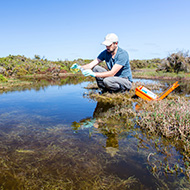Bovine rabies outbreaks linked to deforestation
Vampire bats can spread rabies when feeding.
A new study has found that deforestation in Costa Rica increases the risk of cattle being infected with rabies from vampire bats.
Although the Central American country has successfully controlled the disease in dogs through a vaccination programme, cattle are still impacted by the virus, with more than 100 outbreaks since the mid-1980s.
The outbreaks are caused by vampire bats, which are known to feed on cattle as well as wild mammals. They feed at night while the animal is sleeping, with infected bats transmitting the virus in the process.
The study, by researchers at Emory University, USA, used data from Costa Rica’s National Animal Health Service to map the time and locations of outbreaks of rabies in cattle between 1985 and 2020.
The land-use of the locations was also mapped for a radius of 10 km, which is the maximum foraging range for the vampire bat. Although around 25 per cent of the country is protected by a national system of conservation areas, agriculture is an important part of the economy and livestock farms account for about 38 per cent of the country’s territory.
Thomas Gillespie, Emory professor and senior author of the study, explained: “The government has done an amazing job of protecting much of its tropical forest. In some areas, however, the country has high rates of deforestation due to clearing of the land for agricultural uses. It's a big dichotomy.”
Using geographic information system software, the researchers calculated spatial probability estimations. They found an association between deforestation and rabies outbreaks, with the risk increasing by four per cent for each kilometre increase in distance from forest. The southern region of Costa Rica had the highest probability of outbreaks.
Prof Gillespie added : “A healthy tropical forest has phenomenal diversity – not just among plants and mammals like monkeys and bats, but also among microorganisms.
“When you destroy parts of a forest, the diversity goes down and the dynamics of disease transmission may change in a way that leads to the emergence of new pathogens or the reemergence of existing ones.”
The research has been published in the journal Emerging Infectious Diseases.
Image © Shutterstock



 A set of international guidelines for disease surveillance in wildlife has been updated for the first time since 2015.
A set of international guidelines for disease surveillance in wildlife has been updated for the first time since 2015.